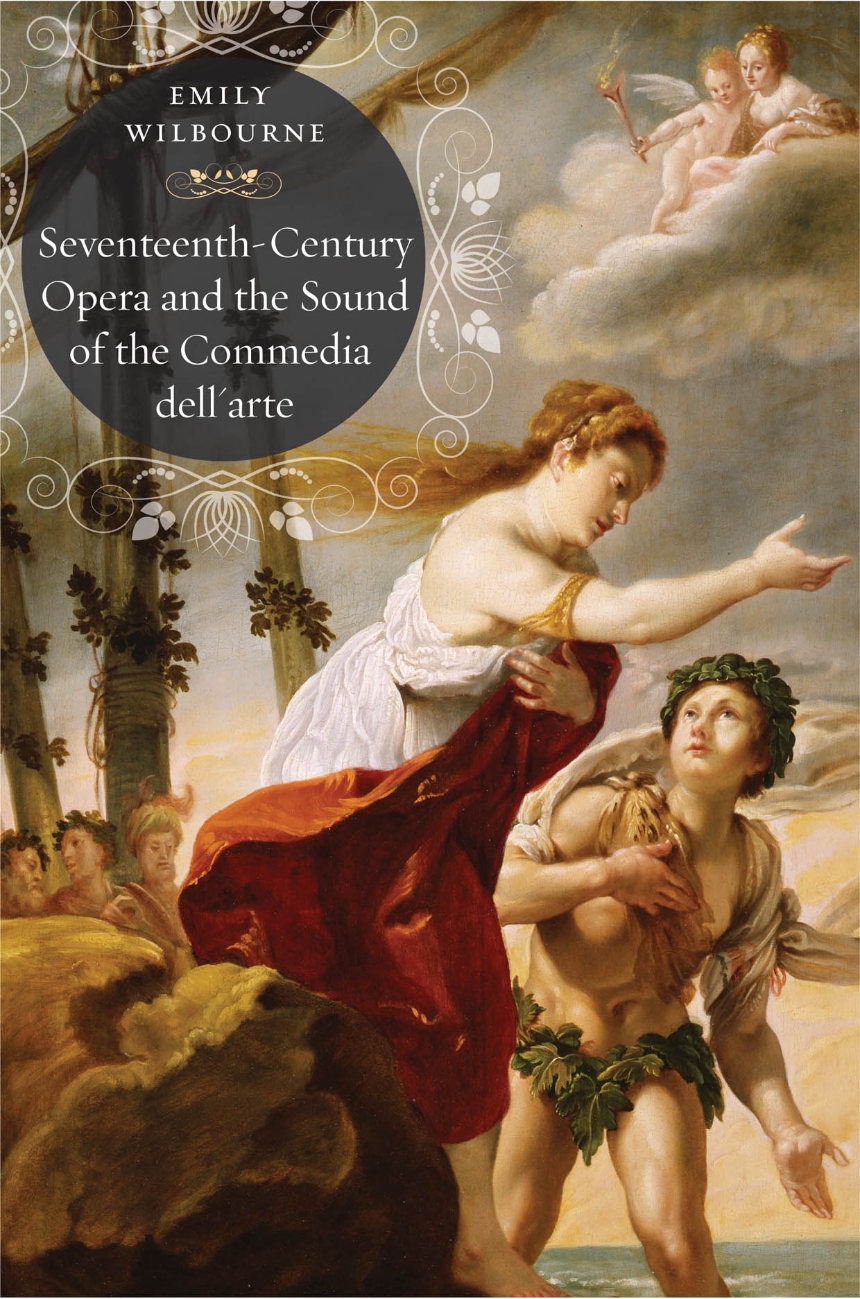Seventeenth-Century Opera and the Sound of the Commedia dell’Arte
In this book, Emily Wilbourne boldly traces the roots of early opera back to the sounds of the commedia dell’arte. Along the way, she forges a new history of Italian opera, from the court pieces of the early seventeenth century to the public stages of Venice more than fifty years later.
Wilbourne considers a series of case studies structured around the most important and widely explored operas of the period: Monteverdi’s lost L’Arianna, as well as his Il Ritorno d’Ulisse and L’incoronazione di Poppea; Mazzochi and Marazzoli’s L’Egisto, ovvero Chi soffre speri; and Cavalli’s L’Ormindo and L’Artemisia. As she demonstrates, the sound-in-performance aspect of commedia dell’arte theater—specifically, the use of dialect and verbal play—produced an audience that was accustomed to listening to sonic content rather than simply the literal meaning of spoken words. This, Wilbourne suggests, shaped the musical vocabularies of early opera and facilitated a musicalization of Italian theater.
Highlighting productive ties between the two worlds, from the audiences and venues to the actors and singers, this work brilliantly shows how the sound of commedia performance ultimately underwrote the success of opera as a genre.
Wilbourne considers a series of case studies structured around the most important and widely explored operas of the period: Monteverdi’s lost L’Arianna, as well as his Il Ritorno d’Ulisse and L’incoronazione di Poppea; Mazzochi and Marazzoli’s L’Egisto, ovvero Chi soffre speri; and Cavalli’s L’Ormindo and L’Artemisia. As she demonstrates, the sound-in-performance aspect of commedia dell’arte theater—specifically, the use of dialect and verbal play—produced an audience that was accustomed to listening to sonic content rather than simply the literal meaning of spoken words. This, Wilbourne suggests, shaped the musical vocabularies of early opera and facilitated a musicalization of Italian theater.
Highlighting productive ties between the two worlds, from the audiences and venues to the actors and singers, this work brilliantly shows how the sound of commedia performance ultimately underwrote the success of opera as a genre.
Reviews
Table of Contents
Note to the Reader
Introduction
“The Tragedies and Comedies Recited by the Zanni”
Chapter One
The Commedia dell’Arte as Theater
Chapter Two
“Ma meglio di tutti Arianna comediante”
Chapter Three
The Serious Elements of Early Comic Opera
Chapter Four
Penelope and Poppea as Stock Figures of the Commedia dell’Arte
Conclusion
Seventeenth- Century Opera and the Sound of the Commedia dell’Arte
Acknowledgments
Notes
Selected Bibliography
Index
Introduction
“The Tragedies and Comedies Recited by the Zanni”
Chapter One
The Commedia dell’Arte as Theater
Chapter Two
“Ma meglio di tutti Arianna comediante”
Chapter Three
The Serious Elements of Early Comic Opera
Chapter Four
Penelope and Poppea as Stock Figures of the Commedia dell’Arte
Conclusion
Seventeenth- Century Opera and the Sound of the Commedia dell’Arte
Acknowledgments
Notes
Selected Bibliography
Index
